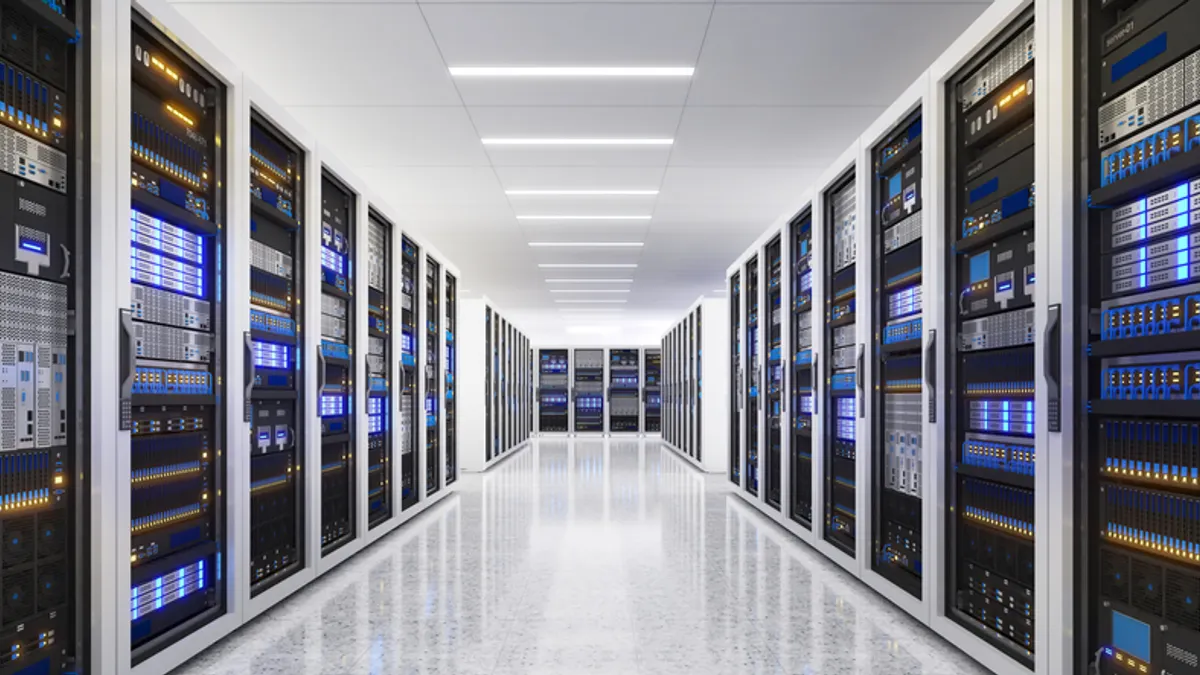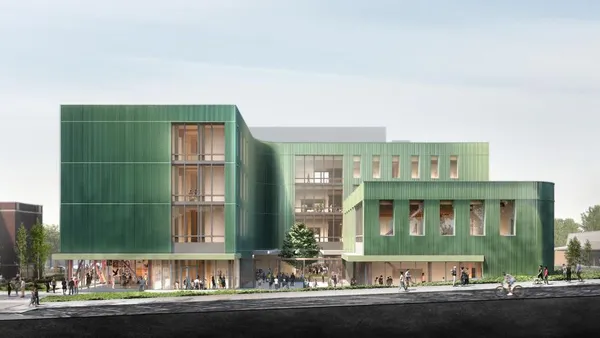Dive Brief:
- Without more technology adoption, the construction industry’s delivery of data centers could fall short even as global demand for artificial intelligence intensifies, according to a new white paper.
- Unless building methods evolve to match the scale and speed required for these complex jobs, contractors may not be able to keep up with client needs, says the report from Revizto, a Swiss construction software provider.
- Currently, the construction sector is struggling to keep pace, putting both infrastructure delivery and broader economic ambitions at risk, the paper found.
Dive Insight:
Globally, capital expenditure on data centers is expected to surpass $1 trillion annually by 2029, according to Redwood City, California-based market research firm Dell’Oro Group. Tech giants such as Microsoft, Google, Amazon and Meta are expected to spend over $300 billion this year alone on data centers and compute power.
Technology adoption remains a critical barrier to the delivery of these projects, according to Revizto research, which found that many construction teams still rely on static, nonintegrated tools even for complex and fast-moving projects. The firm said 27% of global AEC professionals use email, spreadsheets and PDFs as their primary digital tools.
However, data center construction demands complex coordination, massive datasets, strict regulatory compliance, high-stakes communication and tight timeframes, with some projects now moving from concept to full design in as little as 10 weeks, according to the white paper.
"The construction industry can't keep pace with demand using static tools like Excel and PDFs,” said Revizto CEO Arman Gukasyan in a news release. “If we're serious about meeting the demands of modern data center builds, we need a fundamental shift in how we deliver the physical infrastructure that supports them."
Beyond technology adoption, U.S. contractors are finding creative ways to meet the demand for data center development. For instance, contractors are consulting with clients on projects earlier than ever in the process to help evaluate site conditions, entitlement risks, energy procurement and utility interconnection timelines.
“Preconstruction services and capabilities have become a true differentiator,” John Arcello, advanced technology core market co-leader at Redwood City, California-based general contractor DPR, told Construction Dive earlier this year. “Early engagement is critical to stay on track.”
Contractors also are turning to prefabrication more aggressively. On remote sites, Arcello said teams are increasingly building components offsite in labor-rich regions and transporting them to projects. That helps ease skilled trade constraints and minimize rework, he said.
Ike Keene, vice president of commercial at Caddell Construction, a Montgomery, Alabama-based general contractor, said that the need for accurate cost forecasting has grown significantly. That’s especially true as President Donald Trump’s tariffs add a fresh layer of volatility to material prices.
“The newly adopted tariffs have become a new variable in cost control,” said Keene earlier this year. “We are adapting day by day for accurate current and future pricing structures to aid our clients in forecasting for the future.”














